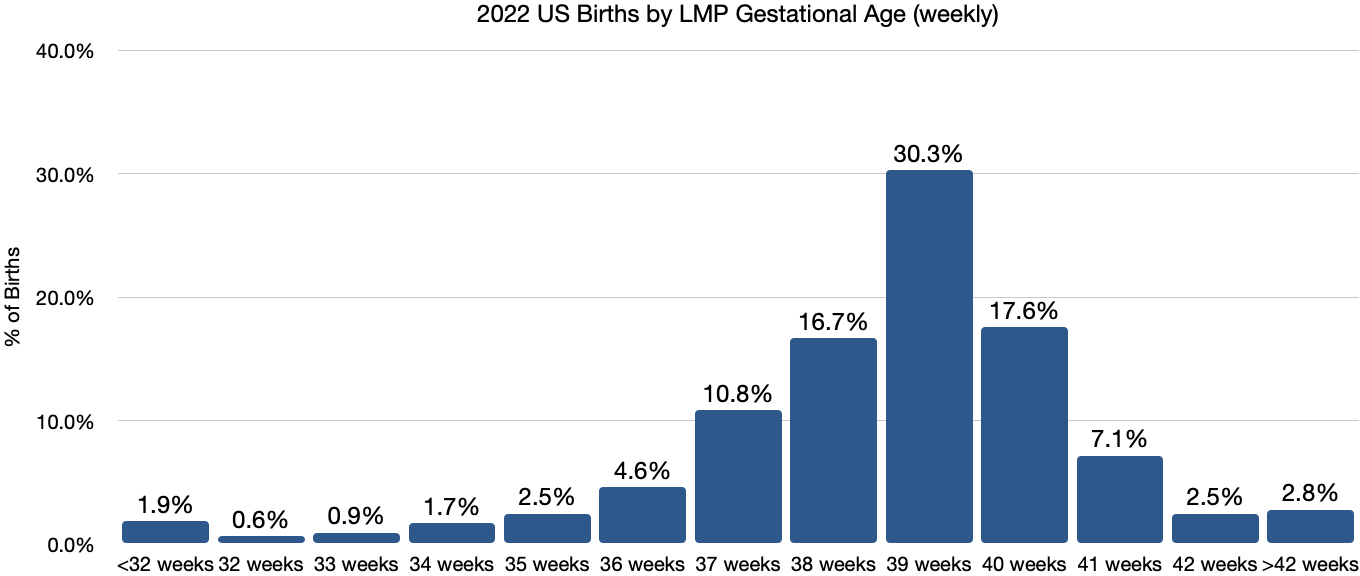When will the baby actually be born?
Examining the birth data by gestational age
The “due date” — a value seemingly so precise, yet not at all indicative of the range of possible baby arrival times. What do I mean? Well, perhaps unsurprisingly, most babies aren’t born exactly on their due date. As we’ll see shortly, there’s quite a bit of variation.
If you’re like me, you might have thought of birth timelines as being either pre-term or full-term. That would mean that births would be highly concentrated around the original due date if full-term or a few weeks early if pre-term. This turns out to be a very uninformed view of the world. I and many other preparation-minded people want to know the general probability of when my baby could actually be born.
Before we dive into the data, let’s define the unit of measure. Gestational age is basically a quantification of how far along the pregnancy is, usually measured in weeks. It can be expressed in a couple of ways, but we are going to focus on the LMP (last menstrual period) gestational age.
Now, here is the data from the National Center for Health Statistics visualized in a simple chart to help us answer the question of when babies are born by gestational age (*see footnote at the end for full data citation).
Overall, there is quite a bit more variation than I would have thought. As you can see from the chart, only approximately 30% of births occur at the 39th week of LMP gestational age. Looking at weeks 38, 39, and 40 together, 64.6% of births occur across those periods. One last takeaway here is that only a little over 10% of pregnancies go past the 40-week mark.
So, what’s my conclusion? Well, given that our “due date” is December 7, 2023, I better keep the hospital bag packed and near the back door. This baby could be coming any day now!
One last thing - if you enjoy data-driven pregnancy information, I highly recommend the book Expecting Better by Emily Oster. I plan to do a full review of her book in a future First Term Father post.
So long for now.
-Felix
*Centers for Disease Control and Prevention, National Center for Health Statistics. National Vital Statistics System, Natality on CDC WONDER Online Database. Data are from the Natality Records 2016-2022, as compiled from data provided by the 57 vital statistics jurisdictions through the Vital Statistics Cooperative Program. Accessed at http://wonder.cdc.gov/natality-expanded-current.html on Nov 10, 2023.


